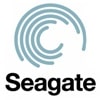
In the last few weeks Avago Technologies closed on their acquisition of LSI and now Avago has agreed to sell off the LSI flash storage assets to Seagate for $450 million. Formally the groups are referred to as the Accelerated Solutions Division (ASD) and the Flash Components Division (FCD) which accounts for the SandForce controller business and Nytro PCIe flash drives. The move comes as Seagate has been forced into action to react to the growth in the client and enterprise flash markets. They've also been flat out bludgeoned by WD, who has invested roughly a billion dollars in flash companies like STEC and Virident, the latter of which Seagate had just invested in when WD took out the entire company.
The LSI ASD and FCD assets are a bit wounded compared to where they've been; the combined value of $450 million isn't great for LSI/Avago considering LSI paid $400 million alone for SandForce in October 2011. Prior to the Avago deal, LSI has been facing headwinds in shipping the new generation of SandForce controllers and innovation within their Nytro PCIe flash cards has been handily eclipsed by most other enterprise flash vendors including Virident, Fusion-io, Huawei and OCZ (Toshiba). It's now up to Seagate to see if their process and team can infuse new energy into the LSI flash brands.
Seagate has been hiring, especially in their enterprise flash division, pushing forward with the 600 Pro light enterprise drive and the SAS-based 1200 SSD which is designed for mainstream enterprise applications. Both drives showed promise in our testing. While not setting the world on fire, they were always looked at as largely a market validation project. Many forget that Seagate has been in the SSD business for a long time, their Pulsar (2009) and Pulsar.2 (2011) SSDs have helped Seagate develop a reasonable depth of institutional knowledge. Bringing the SandForce team in-house is a bit of a reunion too, the original Seagate SSDs had a very early version of what would become the commercial SandForce controller technology inside.
Last month we mused out loud about WD and Seagate making investments in NAND. While some have argued that the hard drive behemoths have too much momentum and can't turn the ship toward new technologies, Seagate puts some of that to rest for now at least. While they still need a long term flash supply connection, bringing controller technology IP in-house is a great first step and in one swing they've closed the gap with WD dramatically. Many questions remain however around Seagate's plans to keep licensing the SandForce controller and reference designs to competitors and what happens with the integrated Nytro MegaRAID cards. For now though it doesn't sound like much will change, Seagate expects, "the combination of its enterprise SSD product line and these SSD Controller families to generate revenues of at least $150 million and be slightly accretive to the company gross margin with operating margin headwind of $30 to $40 million."
The transaction is expected to close in the third quarter of calendar year 2014 subject to regulatory approvals.
